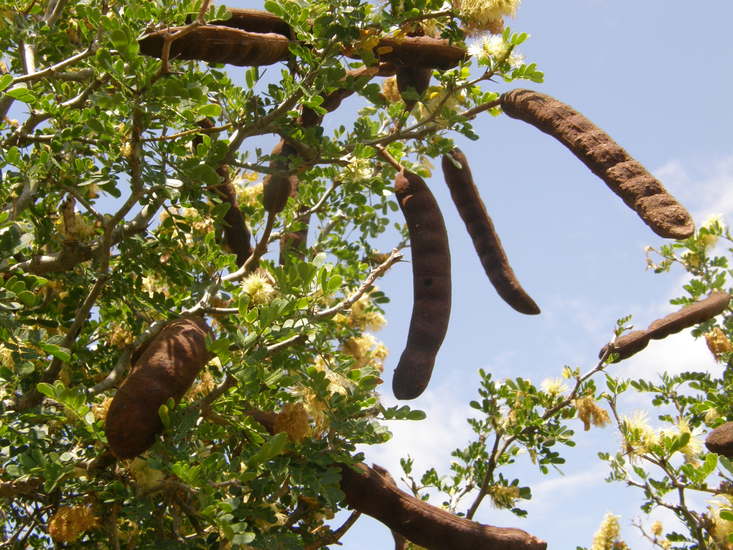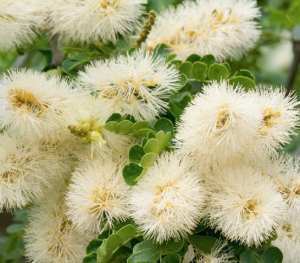
Texas Ebony seed pods. Photo by Wynn Anderson
A lifetime ago I used to fly to Dallas Texas in an executive jet from Orlando. It was a 150-minute flight take off to touch down. One could see the Mississippi river for 40 minutes. One of the first things you notice in Texas is the plants are different and things tend to be named Texas this or Texas that even if it is just a thistle. Thus that the Texas Ebony is not an Ebony is no surprise and could easily be called the Mexican Ebony. It is edible no matter what its name is.
The seeds are toasted, young pods are cooked like a vegetable. The seed coat was used for a coffee substitute. It also has edible relatives: P. lobatum has seeds that are edible raw or cooked. Young flowers, leaves and fruit are eaten. The seeds are a source of starch. The seed and aril of P. dulce are eaten and the seeds produce a useable oil. (See a separate entry for P. dulce, aka Camachile.)

Texas Ebony blossom.
The seeds of E. ebano are about 35% protein which is comparable to legumes though they are larger than chickpeas. Carbohydrates in 100 grams (before processing) are 29.36 grams, fat 28.16 grams but fiber quite low, 0.51 grams per 100 grams. That’s all about 500 calories. Cooking increases the available protein by some 12% and reduces anti-nutrient phytate 35% and protein inhibitors 96% overall increasing the nutrition. The most common amino acids are leucine, lysine, valine, isoleucine and treosine.
Originally Pithecellobium flexicaule it is now Ebenopsis ebano. As that is mostly Greek it can be translated in several close ways. Pithecellobium flexicaule is easy: Monkey’s Earring with Bent Stem. Ebenopsis ebano has more possibilities because of -opsis. That’s often translated into “view” but the original Greek means more like a spectacle, something impressive you would see on stage or the like, something that makes you go “wow!” So I’d say Spectacular Black Ebony. That’s better than Monkey’s Earring with Bent Stem.
Green Deane’s Itemized Plant Profile
IDENTIFICATION: A large tree to 50 feet, trunks up to 10 feet in circumference, branches very spiny and zig-zag at every node, dark green foliage, white to yellow fragrant flowers starting in May or June creating four to six inch pods. Hardy down to 25F, perhaps lower.
TIME OF YEAR: Pods in fall.
ENVIRONMENT: Well-drained clay, loam or sand. Full sun. Very drought tolerant.
METHOD OF PREPARATION: Seeds cooked, young pods boiled.

